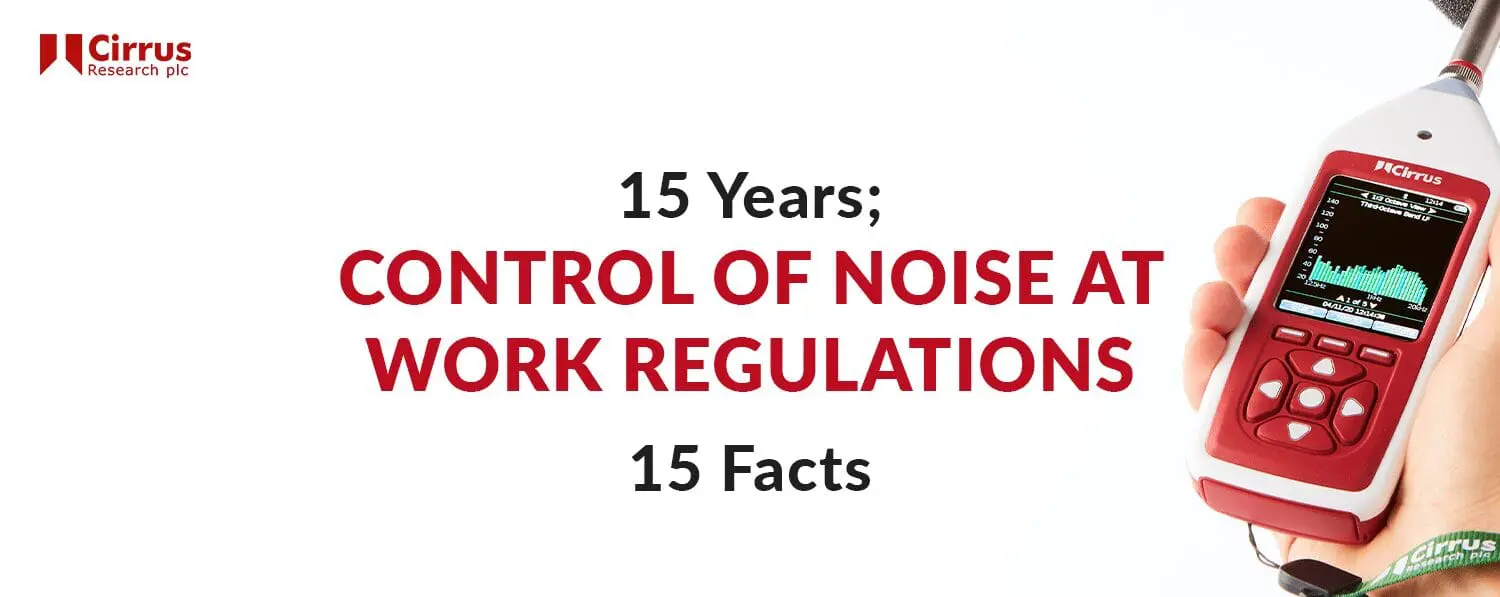Today (April 6th) marks the 15th anniversary of when the Control of Noise at Work Regulations came into force for most UK workplaces. In terms of protecting people from noise, these regulations are perhaps one of the most important developments in recent years, so we wanted to highlight 15 facts about the Control of Noise at Work Regulations to celebrate the impact they’ve had on keeping people safe in the workplace over the last 15 years.
- The Control of Noise at Work Regulations require employers to prevent and/or reduce the risks to their employees from exposure to excessive noise levels in the workplace
- The Regulations apply to all employers, regardless of the industry they operate in
- The Regulations came into force in 2006 for most UK employers, with those operating in the entertainment industry been given a bit longer to adjust, being covered by the Regulations in 2008
- Those who are self-employed are also bound by the Control of Noise at Work Regulations in the same way that larger businesses are
- The use of hearing protection should be the last resort for any employer
- The main priority is to reduce noise levels in the workplace
- The Regulations specify action levels that dictate the noise level at which something must be done to reduce the risk
- The lower noise action values are as follows:
- A daily or weekly personal noise exposure of 80 dB(A); and
- A peak sound pressure of 135 dB(C)
- The upper noise action values are as follows:
- A daily or weekly personal noise exposure of 85 dB(A); and
- A peak sound pressure of 137 dB(C)
- The Regulations specify exposure limits that dictate the noise level above which an employee must not be exposed
- The noise exposure limits are as follows:
- A daily or weekly personal noise exposure of 87 dB(A); and
- A peak sound pressure of 140 dB(C)
- The exposure and action values are based on the average exposure over an 8-hour day, which is the length of a typical work shift
- There are six key steps needed in order to be compliant with the Regulations:
- Asses the risk to employees in the workplace
- Take action to reduce the noise levels that create the risk
- Provide employees with hearing protection if the noise levels cannot be reduced using other methods
- Ensure the noise exposure limits are never exceeded
- Provide employees with information, instruction and training on the risks of noise and how to reduce them
- Carry out health surveillance where a risk to health has been identified
- Failure to comply with the Regulations can lead to significant fines, as well as reputational damage, loss of earnings and can put your employees’ hearing and health at risk
- The Health & Safety Executive provides in-depth guidance on the Regulations and how to ensure you’re compliant.
Unsure what dB(A) and dB(C) mean? Check out our article that explains the differences in full!
Have the Control of Noise at Work Regulations had an impact?
Since the Control of Noise at Work Regulations were introduced, there has been a steady decline in the number of cases of occupational deafness reported in Great Britain. However, 2019 saw a sharp increase from the previous year, with 95 new cases being reported, up from around 50 in 2018. This is still much improved from 10 years ago, when the number of cases of occupational deafness was reported to be around 200!
There are still around 17,000 people estimated to be suffering from work-related hearing problems, so there is clearly still a lot more to do. If you’re new to noise at work or are looking to learn about what you can do to ensure your employees are properly protected against the risks of noise, check out our free eBook: “The 5 Biggest Noise at Work Mistakes and How to Overcome Them”.



